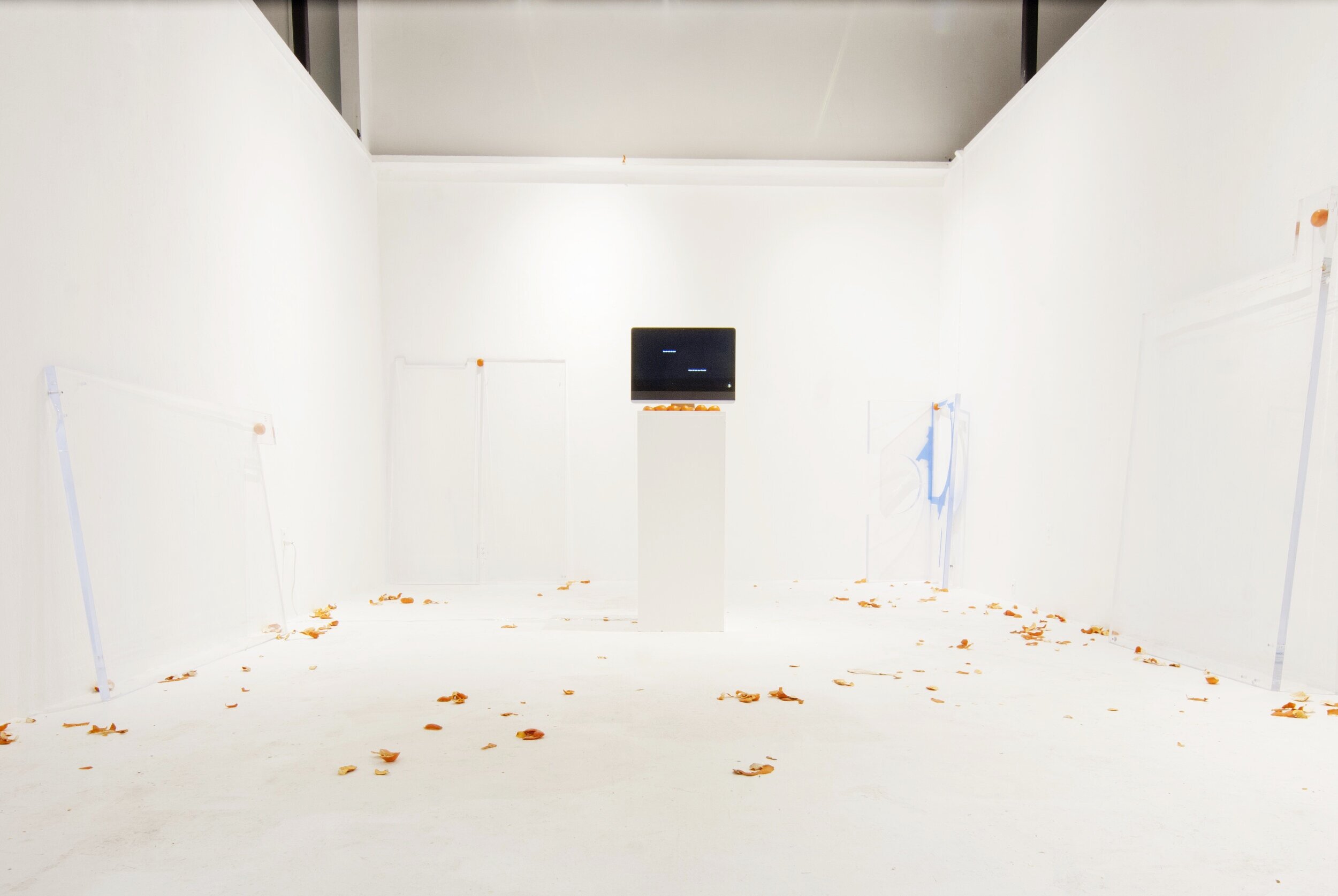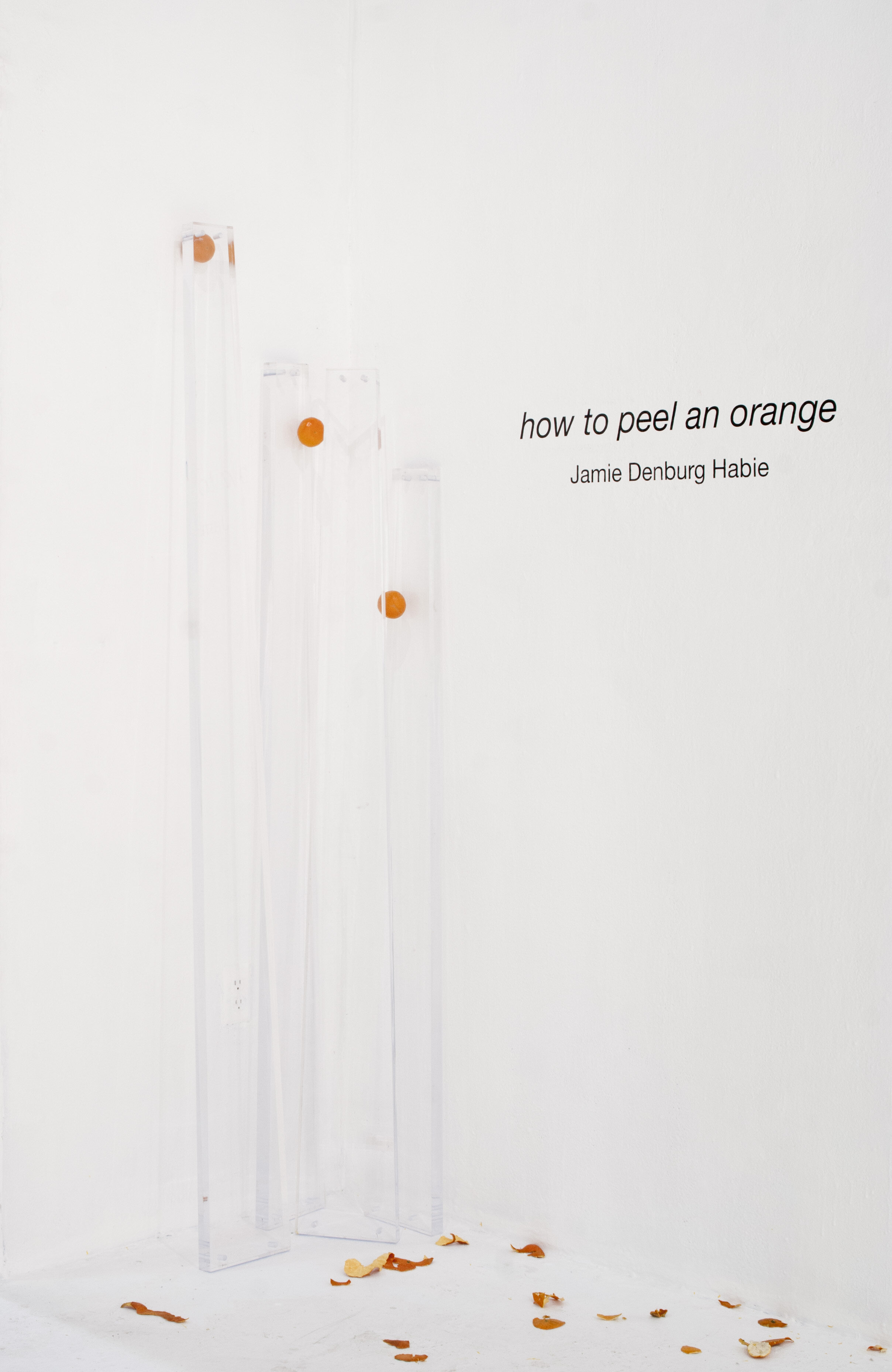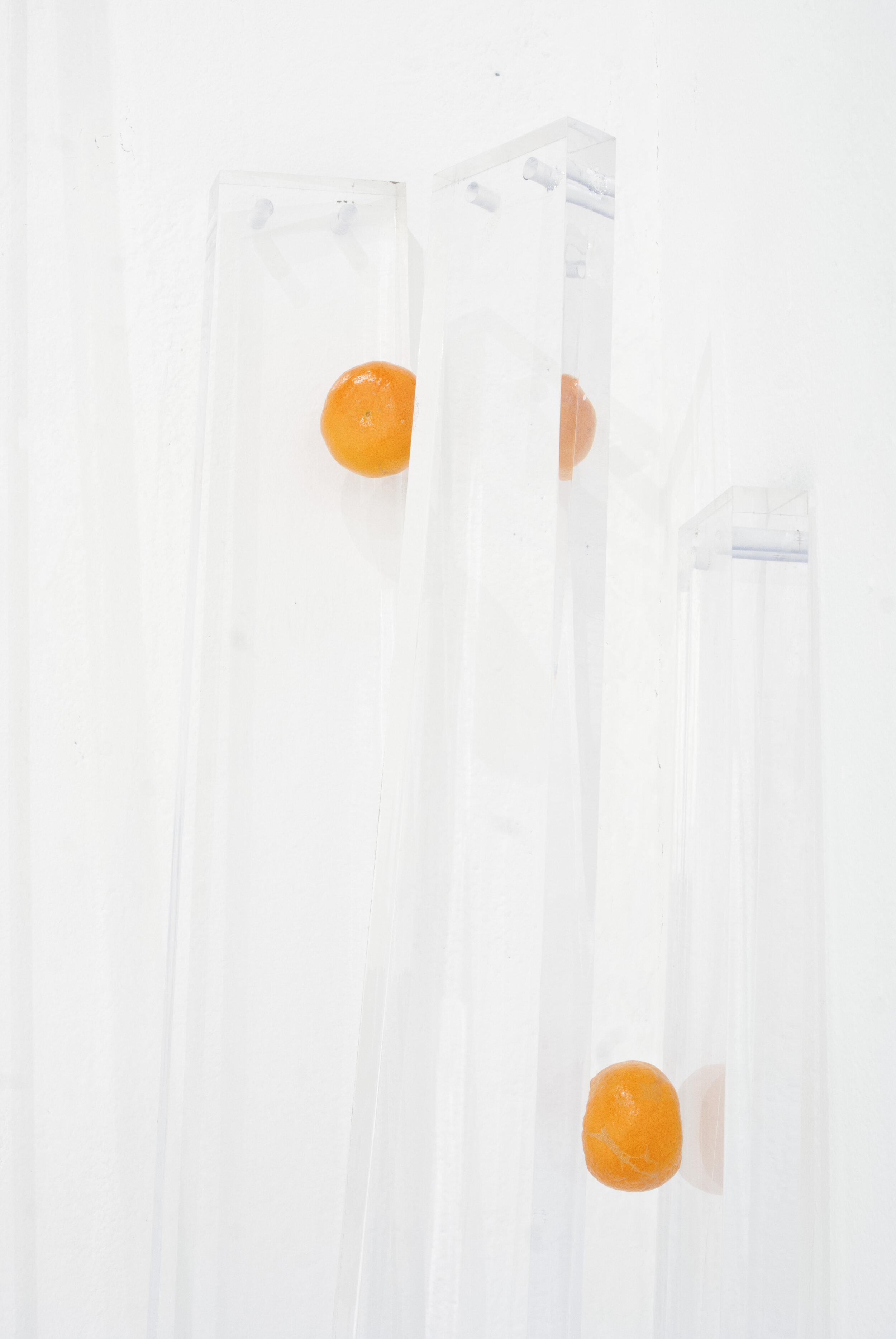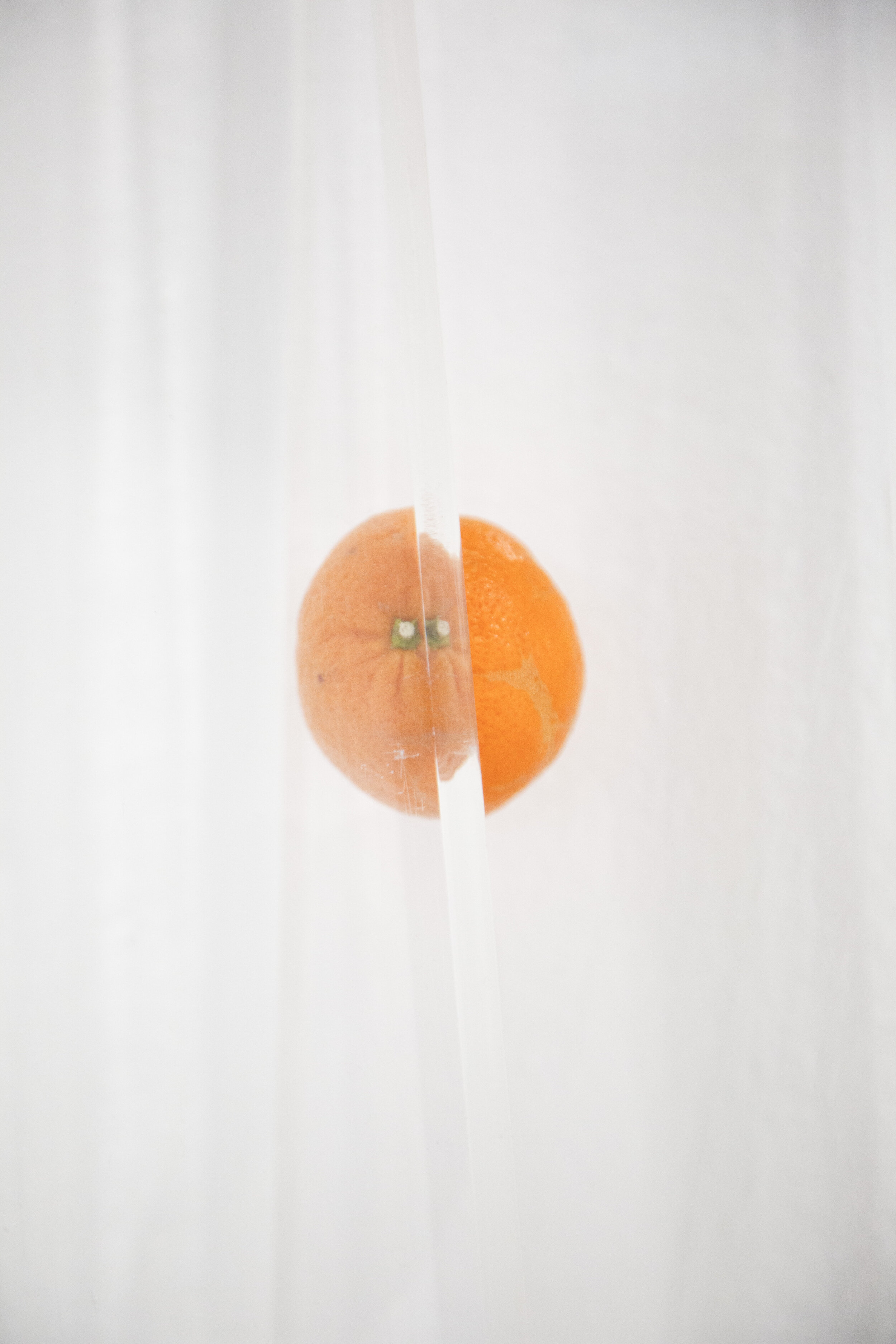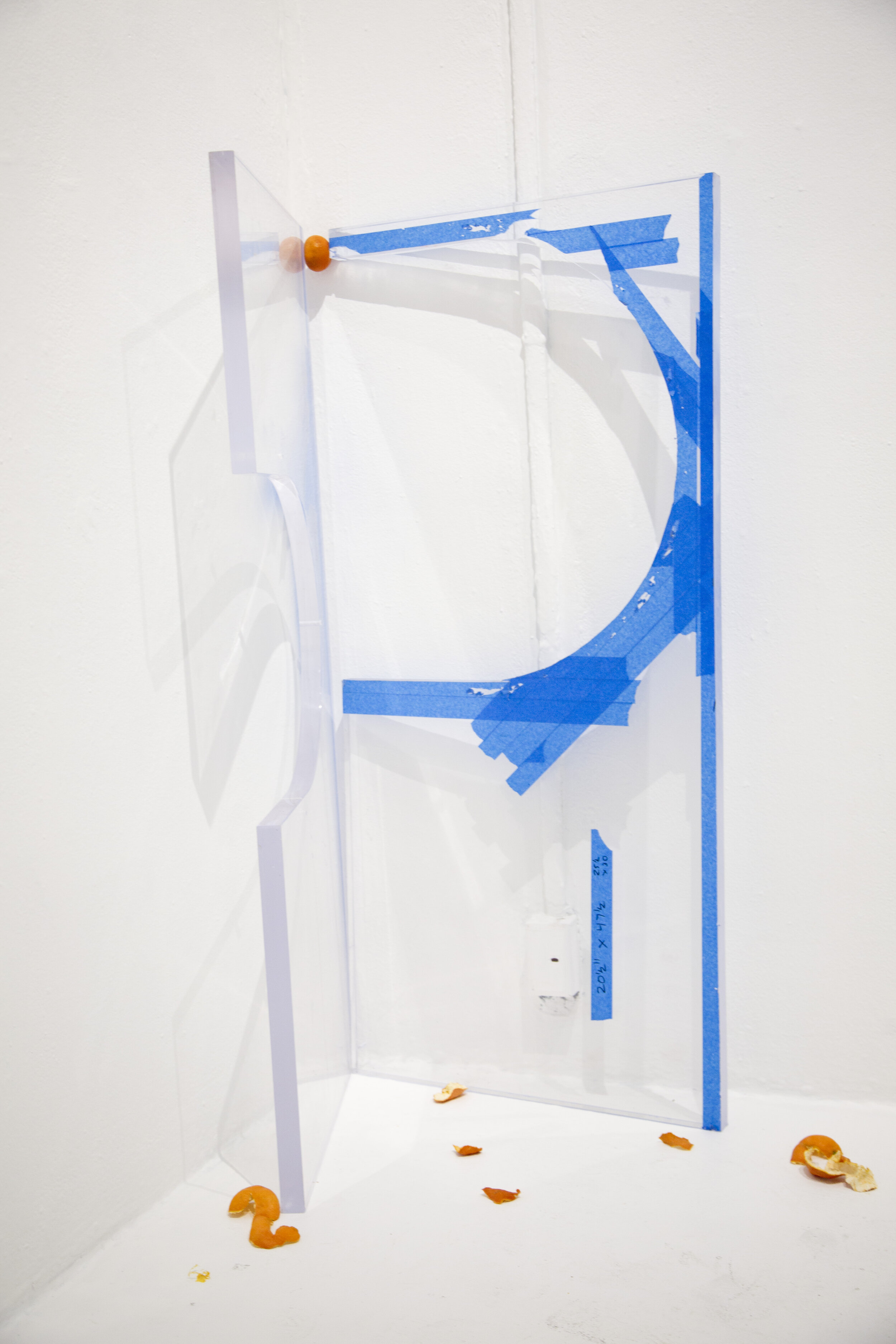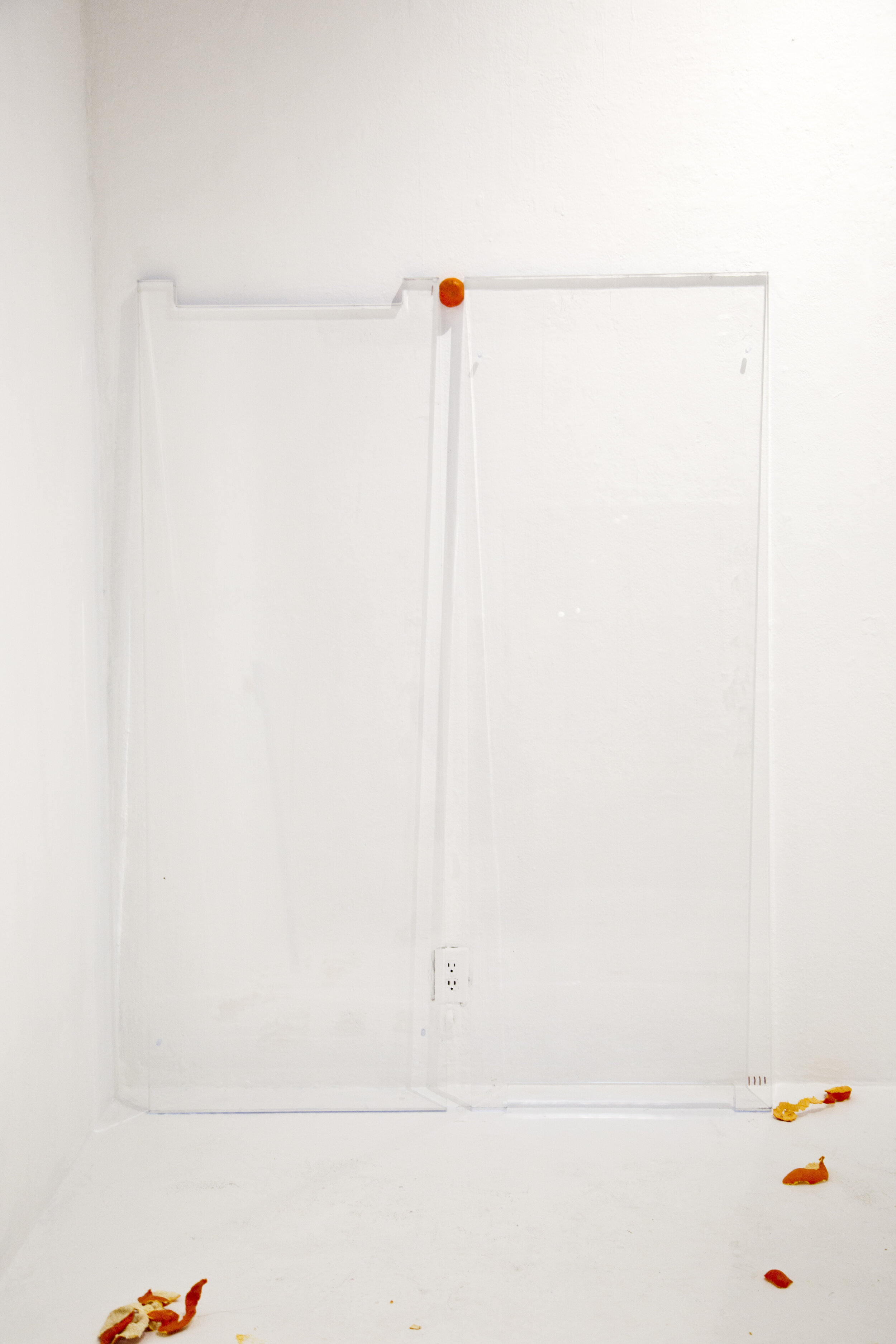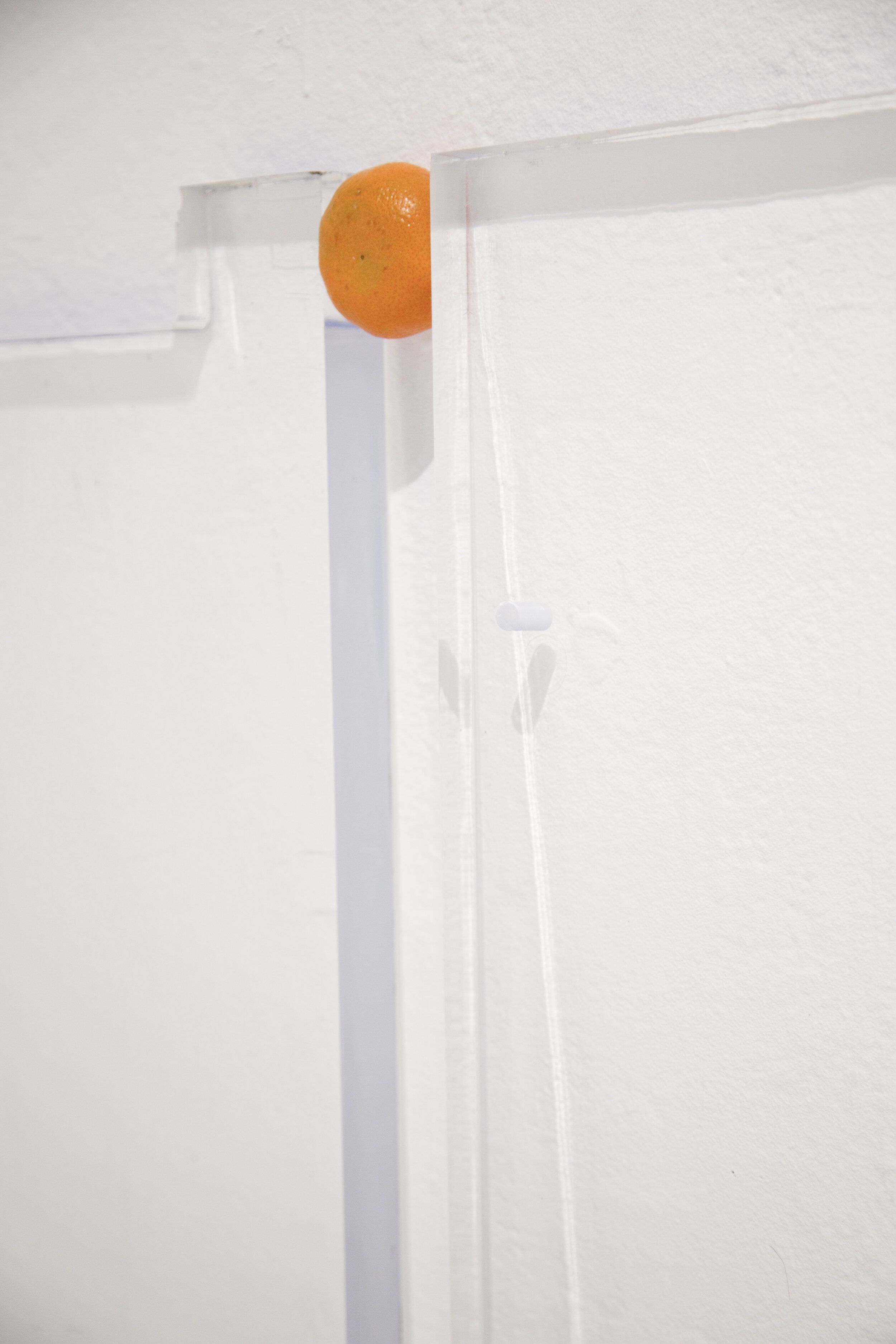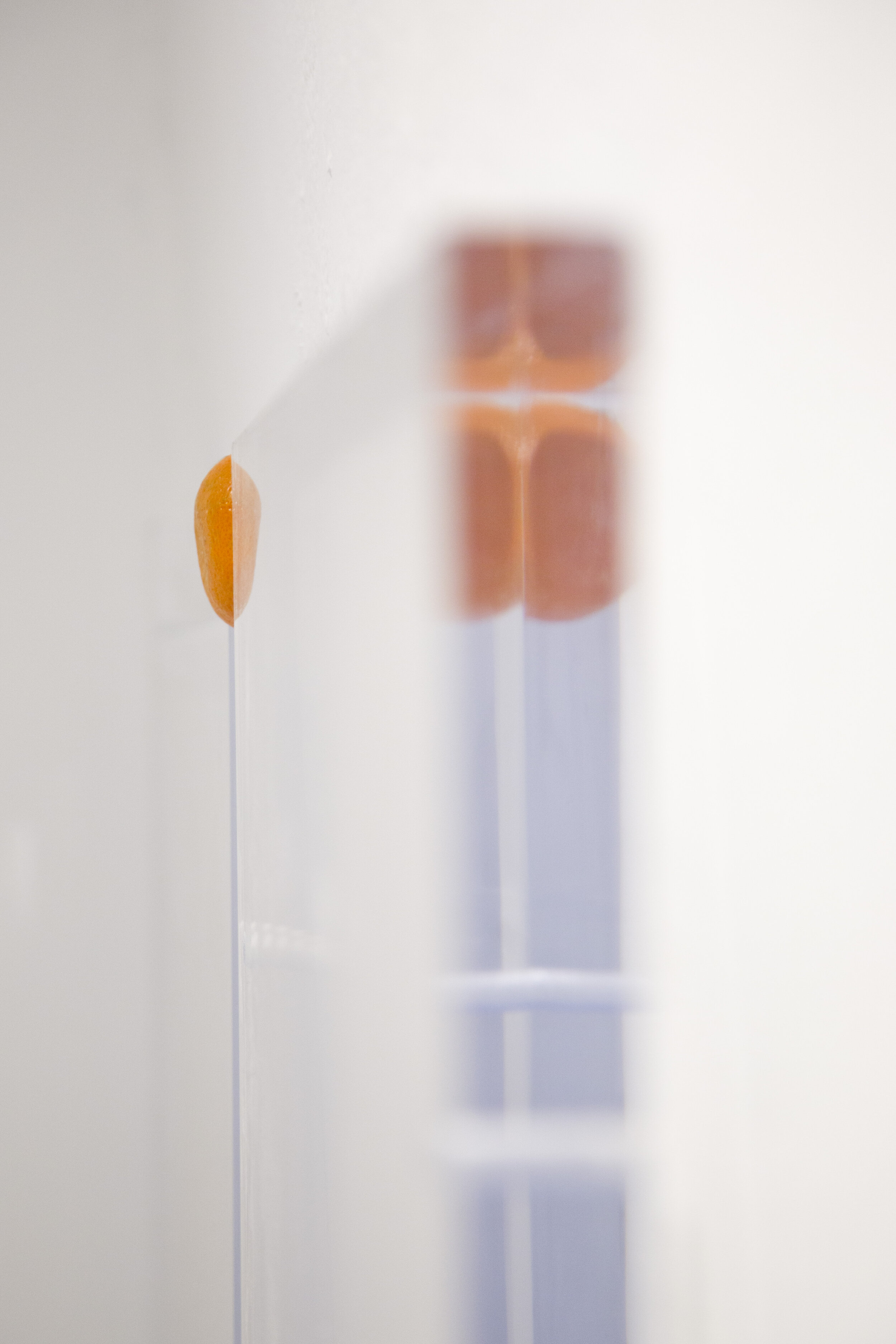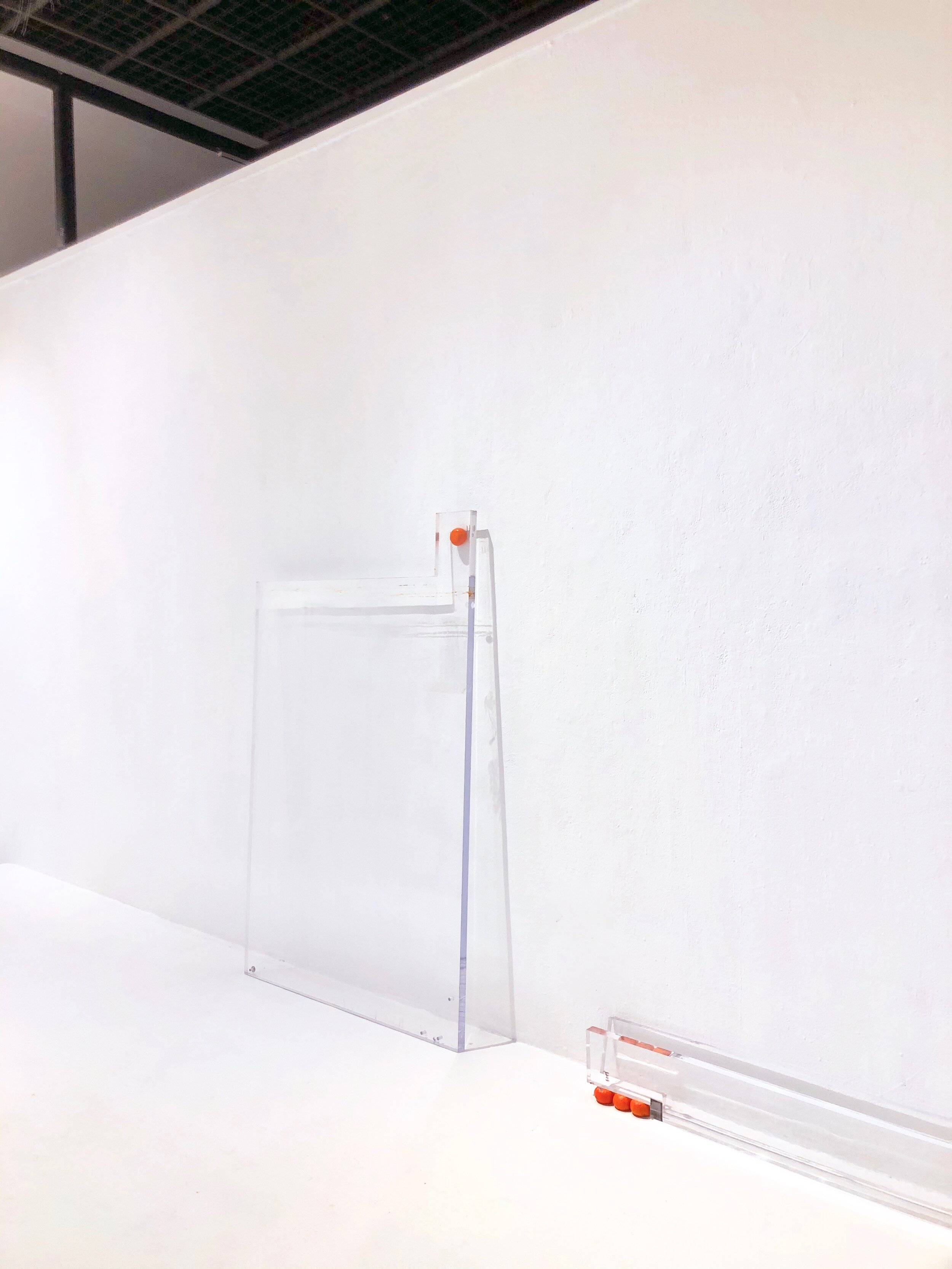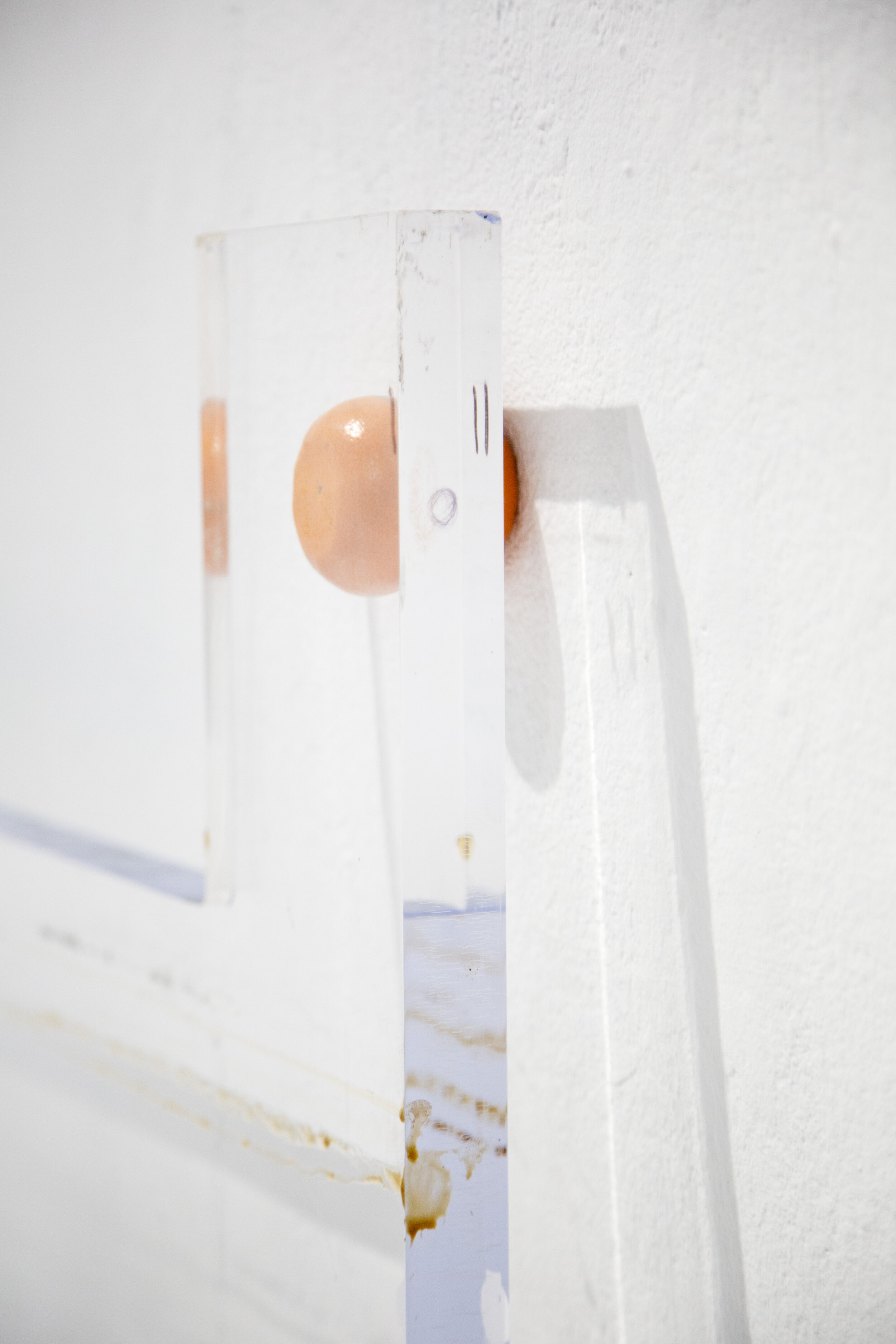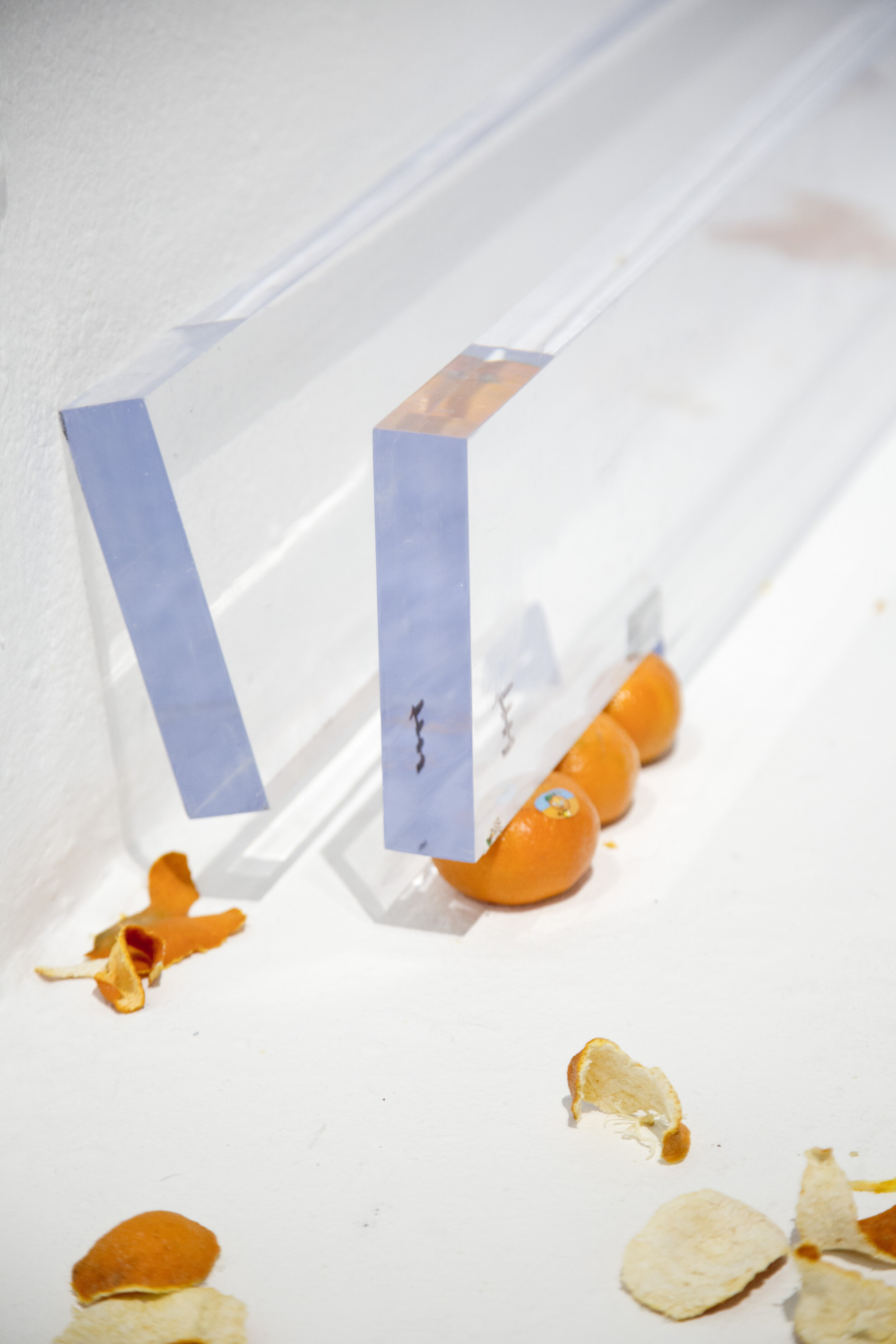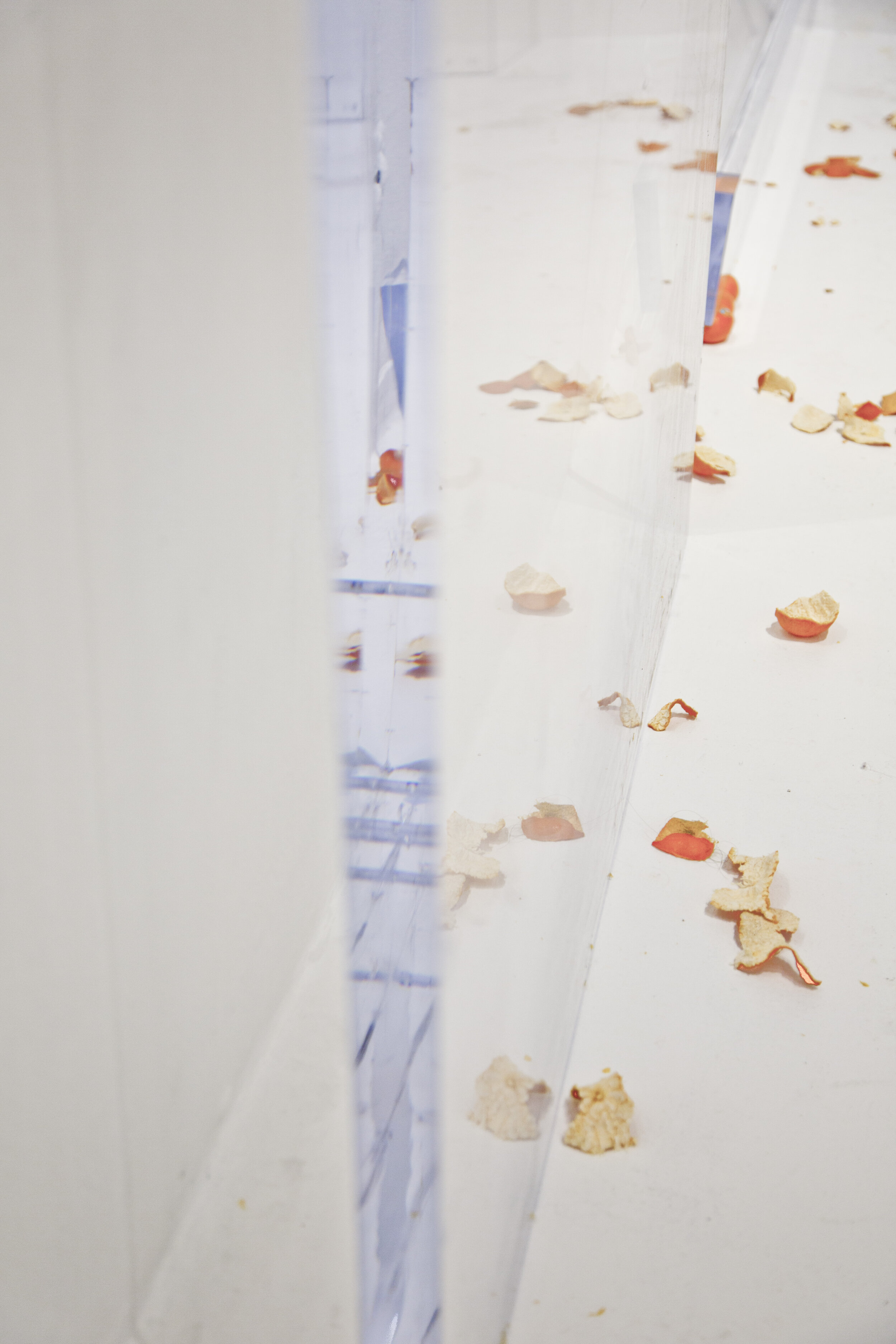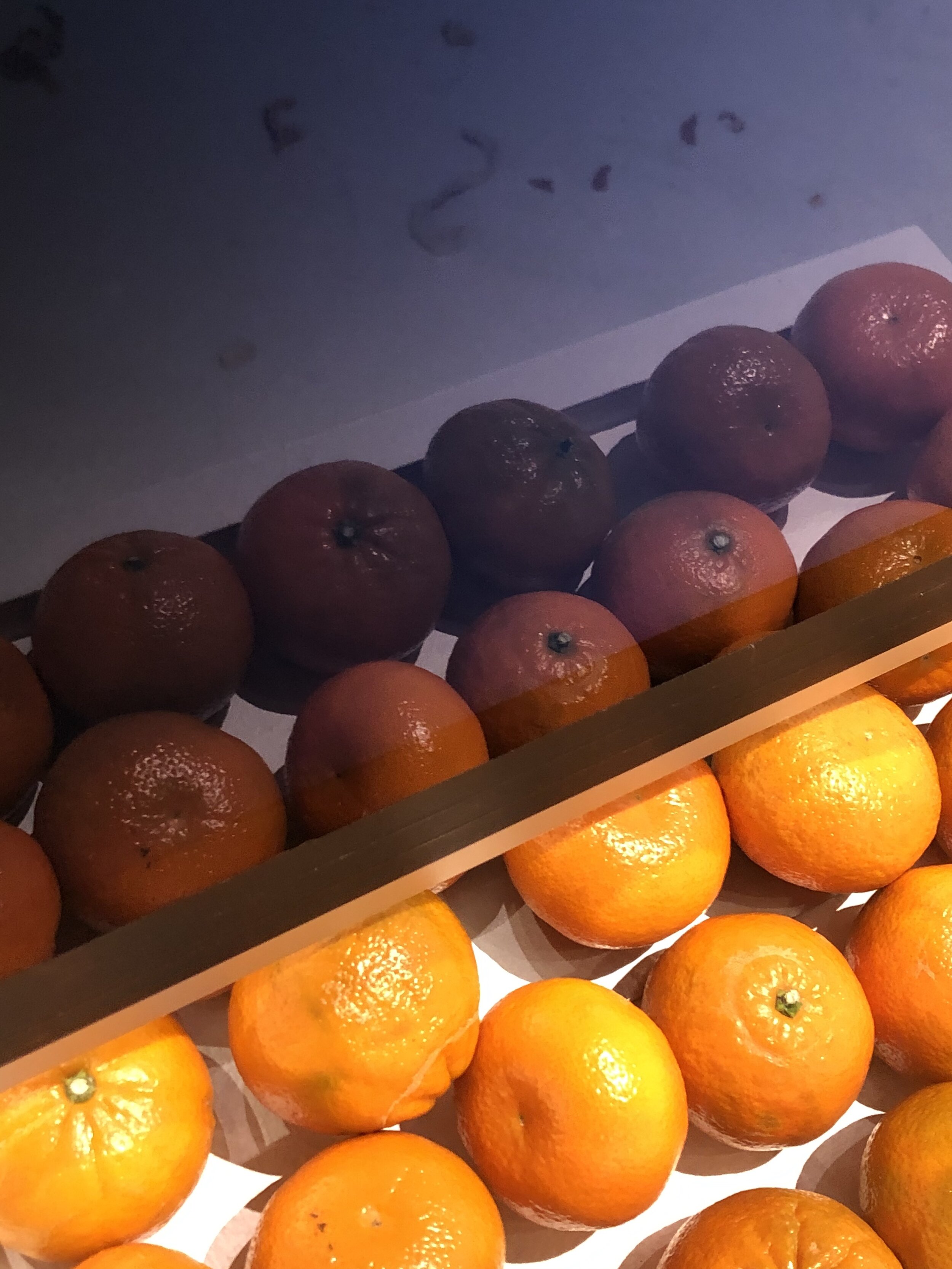HOW TO PEEL AN ORANGE, 2020
In Guatemala, the fear of violence is not only felt in the body but mirrored in objects built to withstand harm—barricades, Kevlar, bulletproof glass.
How to Peel an Orange explores whether reassigning the function of such objects can transform their meaning. Centering on reclaimed bulletproof glass—a material designed to absorb violence—the work uses an algorithm that randomly pairs how-to questions and answers in real time, disrupting fixed meaning and reframing the glass as a site of interaction.
Sourced from cultural references and ancestral knowledge, the shifting text destabilizes the material’s symbolic weight. Through sensory engagement—touch, taste, scent—participants peel and eat oranges, playfully repurposing the space and material, and in doing so, probing the relationship between trauma, memory, and transformation.
Exhibited in March, 2020 at California Institute of the Arts. Photos by Chahakilo Tori.
